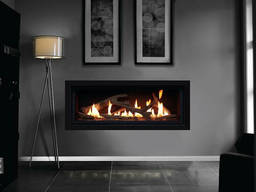Home heating options in a nutshell

Before you even consider which type of heating system will be right for you, consider how you can make your home more efficient at retaining heat.
Overlooking this step could cost you dearly in the long run, resulting in the need for a more powerful heater which perpetually struggles against cold draughts and escaping heat.
Make sure that all the places where air can escape are sealed up. Cracks between windows and walls, and under doors are an avenue for warm air to escape and cold draughts to blow in. Most importantly, consider insulation. Insulation can most easily be installed during building or renovation, but it’s possible to add it afterwards. Contact a professional insulation contractor to discuss the best insulation options for your home.
Central heating
Central heating typically uses hot water or air, distributed throughout the house through pipes and ducts. These heaters are usually powered by gas or electricity, and sometimes even wood or solar energy. Gas is generally more energy efficient than electricity, however a reverse cycle air conditioner can be a highly efficient option.
Ducted gas heating is a cost effective and environmentally friendly way to heat your whole home, or selected rooms, using hot air generated by a furnace. It’s effective in even very cold weather, and a flue carries the fumes safely out of your home. Heat pumps and reverse cycle air conditioners can also be used in this manner.
Hydronic heating systems use water heated in a boiler distributed through pipes and radiators to heat rooms. They can also be installed under the floor, as a comforting and luxurious presence. It’s a popular choice for those with allergies, as there is no air moving around the house as part of the heating process.
If you opt for central heating, choose a system where you can selectively include or exclude rooms from being heated. This will help you to reduce costs and emissions by only using what you need. Ensure that your house is well insulated and the pipes carrying the air or water are insulated too. This prevents heat loss which occurs as the water or air travels through the walls.
Space heating
Space heaters are used to heat one area only. Electric heaters are a common example of a space heater. They are cheap to purchase, but can be very expensive to run, and produce large amounts of emissions compared to other heaters. It’s important to purchase one with a safety feature which cuts power to prevent overheating. Reverse cycle air conditioning has better energy efficiency and effectiveness.
In contrast with their central heating counterparts, portable gas heaters are often unflued, meaning there is no pipe to carry fumes safely out of your home. For this reason they must be used in a well ventilated area, which can be counterproductive to your heating efforts.
Similarly, a fireplace requires adequate ventilation, which can lead to heat escaping. If you prefer the look and feel of a fire, an airtight, slow combustion heater has great energy efficiency. They can burn for longer than an open fire, and use less wood. There is an ambiance that is only achievable with a fire, and modern wood heaters provide the same romance, only better.
For more information, please contact the expert contributor.


.jpg)